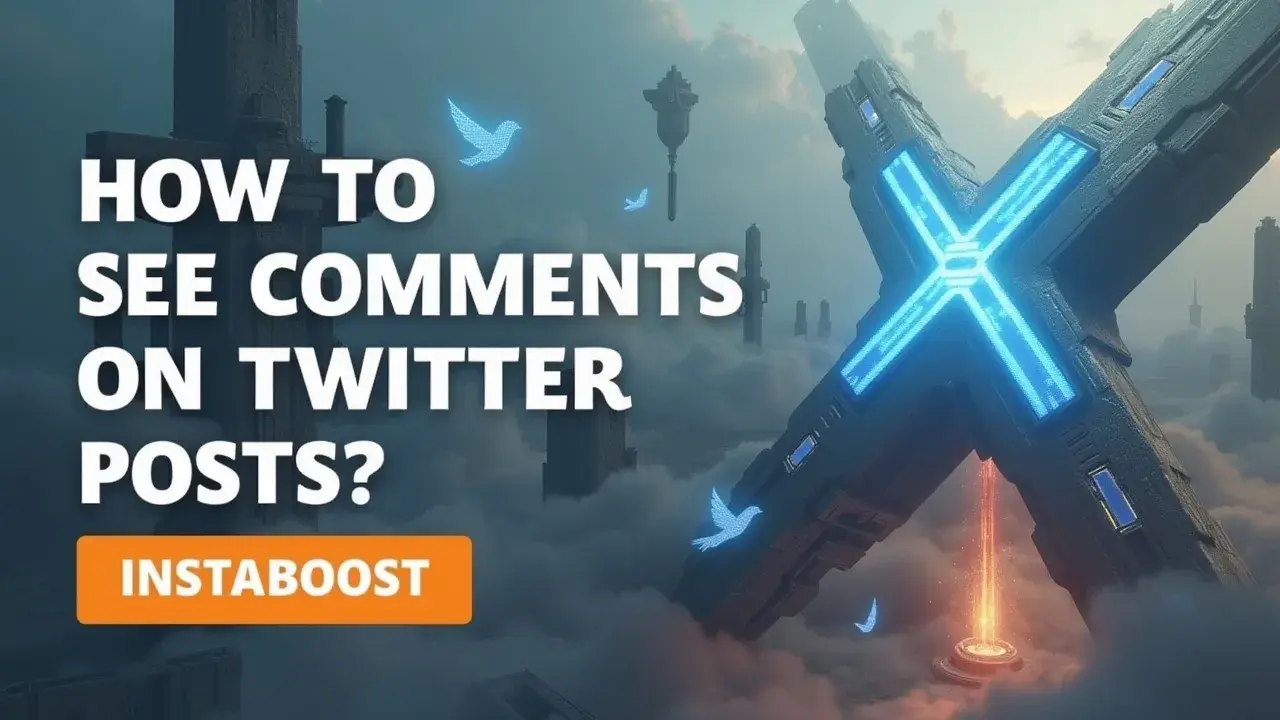How to See Comments on X (Twitter) Posts?
Comments on X (Twitter) posts appear beneath the tweet, with replies stacking into threads that reveal the flow of conversation. Start by reviewing the visible replies, then expand threaded responses to trace context and sub-discussions. Focusing on early activity within the first hour can indicate who is driving engagement and where sentiment is forming. Done thoughtfully, this view informs timing, helps interpret audience mood, and guides when to join or amplify the discussion.
Why Replies Matter More Than Likes
The fastest way to read a Twitter post is to study the replies, not just the like count. Comments surface what the algorithm can’t summarize – context, sentiment, and which angles actually land. When you open a tweet, the platform ranks responses by a blend of relationship signals, recency, and engagement, so the first screen isn’t random. It’s a live read on what the network thinks matters to you. If you’re scanning comments for research, brand tracking, or creator collabs, treat it like a structured pass. Load the initial thread, then pivot to “Posts,” “Replies” in the author’s profile to see how the conversation splits into sub-threads.
This works best with clean analytics – track the first hour for early momentum, note which replies attract quote tweets, and tag real comments from qualified accounts over generic reactions. If you promote a post, match targeting to the reply patterns you’re seeing. A modest, well-aimed boost can surface higher-quality voices that compound reach, while a broad spend can muddy sentiment if it’s mismatched to intent. Tools can help when they preserve context like user handles, timestamps, and thread depth, and when they fit your reporting stack, and even seemingly simple heuristics about audience quality can be as revealing as any plan to buy X followers when you’re assessing whether attention is organic or paid.
A practical workflow is simple. Monitor replies in-app for nuance, export snapshots for retention signals, and revisit after 24 hours to see which sub-conversations held. One overlooked signal is the mid-tier reply that attracts replies of its own – these micro-hubs map to audience segments you can engage directly or invite into creator collaborations. Use that to refine timing, tone, and follow-ups, and you can turn a quick comment check into a steady engine for higher-quality interactions.

Signals You Can Trust When Sorting Replies
I paid to learn this, and it was worth it. I once boosted a tweet because likes looked like resonance, and the ad spend flopped because I hadn’t read the replies. Comments are where the qualified signals live – patterned questions, repeat objections, and the “aha” phrasing your audience uses. When you open a Twitter post, the first replies aren’t random. They’re ranked by relationship, recency, and engagement, so you’re looking at a live proxy for relevance. Read the top replies for language you can mirror in your copy, then switch to the Latest tab to catch fresh sentiment before it gets upvoted into bias.
If you’re validating an idea, run a simple testing loop: snapshot early replies in the first hour, note retention signals like follow-backs, profile clicks, and link expands, and compare them against a clean analytics view. It works best when you pair organic reading with qualified tooling – reputable reply exporters or social listening dashboards – so you can segment by author type (customers, creators, critics) and track how comments shift after targeted promotion. For creators and brands, real comments plus small, well-aimed boosts create early momentum the algorithm recognizes, and researchers will want to note that growth hacks and follower mixes, including buy niche twitter followers, can distort perceived fit unless you label interventions in your notes.
For researchers, archive threads by date range to separate initial reactions from pile-on takes. If risks exist – brigading, bot noise, or sarcasm reads – add safeguards: filter for verified history, mute keywords that skew tone, and weight replies with meaningful syntax over one-word cheerleading. The non-obvious win is to treat the reply stack like a usability test. If a question repeats three times, the message failed. If a creator collab joins and reframes the thread, update the post and re-promote. That’s how you read comments and convert them into decisions.
Strategic Triage: Read Replies with an Operator’s Mind
When everything feels urgent, it’s hard to stay strategic. Treat replies on a Twitter post like an operations board. Set your objective first – audience insight, content testing, or performance prediction – then sort comments to match. For insight, scan the first reply screen for repeating questions and objections, then check the All and Latest tabs to catch unranked sentiment the algorithm hasn’t surfaced yet.
For content testing, filter for real comments from accounts with consistent posting histories and relevant bios. Those are stronger retention signals than raw like totals. If you’re pressure-testing a post before targeted promotion, take three snapshots at minute 10, minute 60, and hour 6. Look for phrasing that repeats across time and stays stable. Those lines become your ad hooks or creator collab prompts. This works even better with clean analytics.
Tag tests, track reply-derived keywords, and measure lift when you mirror audience language in your copy. Paid tools or ad spend can accelerate this when you choose reputable listeners or run small, timestamped boosts to audiences matched to intent, and be wary of any “quick wins” framing you encounter while researching options such as boost likes on X as you benchmark approaches without letting them distort signal quality. Cheap vanity dashboards often miss the nuance in comments. One crisp safeguard: hide or reply to bad-faith bait sparingly, but pin clarifying answers that resolve common objections to shape downstream conversation and improve the quality of what you see next.
If you need a quick search term, try “how to see comments on Twitter posts,” then compare threads in similar niches to benchmark your angles. The point isn’t volume. It’s the velocity of learning. Read replies to decide what to test, use early momentum to guide targeting, and keep a tight loop between real comments, retention signals, and your next move.
Rethink “Engagement”: Why Comment Count Can Mislead
Ever try everything and feel less seen? That’s the trap of chasing visible metrics on a Twitter post while missing what actually moves outcomes. Comment volume can look like heat, but unthreaded quips, dunk piles, and meme replies inflate noise without giving you the retention signals you need.
If you’re scanning comments on Twitter posts, filter for substance: patterned questions, repeat objections, and the phrasing people use to explain your point back to you. Those are qualified signals. High-friction replies, where someone quotes your claim and tests it, tend to predict performance better than low-effort cheerleading. This is also where paid accelerants can help or hurt; boosting a tweet works when targeted promotion meets clean analytics, even if some teams quietly track view baselines with tools people use to buy Twitter views while focusing on reply quality, and you read replies like an operator.
Separate first-hour curiosity from day-two adoption, tag creator collabs whose audiences ask implementation questions, and watch whether objections shrink after a clarifying follow-up. Tools matter, so pick reputable ones that show reply lineage and sentiment over time. Free dashboards work for pulse checks, while paid suites shine when you need cohort-level triage and comment-level exports. If you trial an ad, set safeguards. Cap spend, define the learning hypothesis, and measure reply shifts, not just CTR. One crisp rule: match the lever to intent.
Early momentum from real comments plus creator amplification is a testing loop – ads are the accelerant once your replies show comprehension, not confusion. The non-obvious bit is that your best predictor of lift isn’t comment count – it’s the delta between first-touch questions and the refined language people use after your clarifier tweet. Track that shift before you scale.
Ship It: Turn Comment Insight into Action
The next chapter won’t start itself. You’ve learned to read comments on Twitter posts and sort noise from retention signals, so turn that clarity into a simple operating cycle. Set a window – say, the first 60 minutes after publish – to scan replies for patterned questions, repeat objections, and phrasing that mirrors your point back to you. Turn those into a punch list: one fast reply thread to clarify, one follow-up tweet to reframe the sticking point, and one DM invite for qualified leads. If early momentum is promising, pair it with targeted promotion and creator collabs matched to intent; reputable partners amplify real comments, not fluff, and practical moves like safe Twitter reshares only matter when they reinforce authentic traction.
Keep safeguards in place. Pin the reply that best captures the thread’s value, mute dunk piles that distort sentiment, and archive screenshots of high-signal exchanges for a clean analytics trail. When you run paid accelerants, attach a testing loop. A/B your opening line or media and measure against saved searches and UTM-tagged clicks, not just comment count. On a weekly cadence, export replies, tag them by theme, and feed the top three insights into your next content draft and your FAQ. If you need tooling, use qualified dashboards or exports that preserve thread context.
Low-quality scrapers can break the map and skew decisions. The win compounds. Each publish becomes a hypothesis, each comments pass a feedback loop, and each adjustment lifts clarity and conversion. One crisp, non-obvious edge: reply quality predicts retention better than like velocity – optimize for what provokes thoughtful rephrasing, not quick agreement. Do this consistently and seeing comments becomes more than observation. It becomes your shortest route from sentiment to shipped outcomes.















